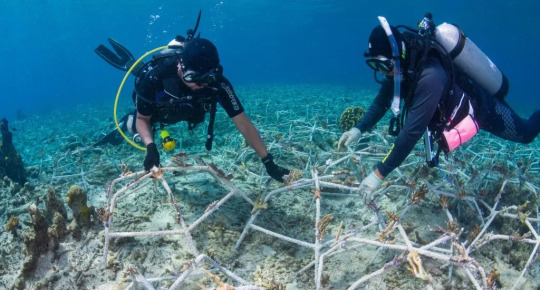#development india include
Explore tagged Tumblr posts
Text

Digital branding is a brand management technique that uses a combination of internet branding and digital marketing to develop a brand over a range of digital venues, including internet-based relationships, device-based applications or media content. #MEDIAHEIGHTS #digitalmarketingcompany #searchengineoptimization #content #instagrammarketing #advertisingagency #web #MEDIAHEIGHTSPRCOM #best #public #relation #agency #in #chandigarh #mohali #punjab #north #india #buildingrelationships #globally #customer #internetbanding — at media heights #smo #branding #facebook #twitter #marketingonline #brand #searchengineoptimization #internetmarketing #follow #digitalagency #marketingagency #motivation #digitalmarketingtips #onlinebusiness #websitedesign #marketingonline #brand #searchengineoptimization #content #instagrammarketing #advertisingagency #web #technology #onlinebranding #branding360degree #SEO #SEObrandingagency #websiteranking #websitetrafic #Digitalmarketing #mediaheights #OnlineAdvertising #instagrammarketing #advertisingagency #web #marketingonline #brand
#Digital branding is a brand management technique that uses a combination of internet branding and digital marketing to develop a brand over#including internet-based relationships#device-based applications or media content.#MEDIAHEIGHTS#digitalmarketingcompany#searchengineoptimization#content#instagrammarketing#advertisingagency#web#MEDIAHEIGHTSPRCOM#best#public#relation#agency#in#chandigarh#mohali#punjab#north#india#buildingrelationships#globally#customer#internetbanding — at media heights#smo#branding#facebook#twitter#marketingonline
1 note
·
View note
Text
#Government Jobs for Civil Engineering:#Government Jobs for Civil engineering is a versatile field that offers a plethora of career opportunities#including lucrative options in the government sector. In India#various government departments and agencies actively recruit civil engineering graduates. Notably#it is for roles that contribute to the development and maintenance of essential infrastructure of the country. In this blog post#we’ll learn about some of the prominent Government Jobs for Civil Engineers in India; that are available across different sectors.#Government Jobs for Civil Engineers in India#1.CENTRAL PUBLIC WORKS DEPARTMENT (CPWD):#The CPWD is responsible for constructing and maintaining government buildings and infrastructure across the country. They frequently recrui#CPWD offers growth through practical experience and training. Moreover#it also encourages further education#and provides competitive government salaries with allowances. Further#the job also includes benefits like medical coverage#pensions#and paid leave for assistant engineers.
0 notes
Text
Things Biden and the Democrats did, this week.
The Consumer Financial Protection Bureau put forward a new regulation to limit bank overdraft fees. The CFPB pointed out that the average overdraft fee is $35 even though majority of overdrafts are under $26 and paid back with-in 3 days. The new regulation will push overdraft fees down to as little as $3 and not more than $14, saving the American public collectively 3.5 billion dollars a year.
The Environmental Protection Agency put forward a regulation to fine oil and gas companies for emitting methane. Methane is the second most abundant greenhouse gas, after CO2 and is responsible for 30% of the rise of global temperatures. This represents the first time the federal government has taxed a greenhouse gas. The EPA believes this rule will help reduce methane emissions by 80%
The Energy Department has awarded $104 million in grants to support clean energy projects at federal buildings, including solar panels at the Pentagon. The federal government is the biggest consumer of energy in the nation. The project is part Biden's goal of reducing the federal government's greenhouse gas emissions by 65% by 2030. The Energy Department estimates it'll save taxpayers $29 million in the first year alone and will have the same impact on emissions as taking over 23,000 gas powered cars off the road.
The Education Department has cancelled 5 billion more dollars of student loan debt. This will effect 74,000 more borrowers, this brings the total number of people who've had their student loan debt forgiven under Biden through different programs to 3.7 Million
U.S. Agency for International Development has launched a program to combat lead exposure in developing countries like South Africa and India. Lead kills 1.6 million people every year, more than malaria and AIDS put together.
Congressional Democrats have reached a deal with their Republican counter parts to revive the expanded the Child Tax Credit. The bill will benefit 16 million children in its first year and is expected to lift 400,000 children out of poverty in its first year. The proposed deal also has a housing provision that could see 200,000 new affordable rental units
11K notes
·
View notes
Text
Navigating the Road of Data: International Traffic Survey and Data Collection Companies in India
#policy formulation#and infrastructure development. In a country as diverse and dynamic as India#understanding traffic patterns and collecting accurate data is essential for transportation planning#urban development#and more. International Traffic Survey (ITS) companies and Data Collection Company in India have emerged as crucial players in this domain#facilitating the collection and analysis of data related to traffic#mobility#and transportation systems. This article explores the significance and role of these companies in India's evolving landscape.#International Traffic Survey Companies:#International Traffic Survey Company specialize in collecting#processing#and analyzing data related to vehicular traffic#transportation infrastructure#and mobility patterns. Their services are instrumental in aiding government bodies#urban planners#and businesses in making informed decisions. Some key aspects of ITS companies in India include:#Data Collection Technologies: ITS companies employ a variety of advanced technologies such as Automatic Number Plate Recognition (ANPR)#GPS tracking#traffic cameras#and sensors to gather comprehensive traffic data.#Traffic Studies: They conduct traffic surveys and studies to assess traffic flow#congestion levels#vehicle types#and road usage patterns. These studies are essential for designing efficient road networks and transport systems.#Toll Collection Management: Many ITS companies are involved in the management and operation of toll collection systems on highways and expr#ensuring seamless traffic flow and revenue collection.#Public Transport Analysis: ITS companies also analyze data related to public transportation#including bus and metro systems#to improve the efficiency and accessibility of these services.#Data Collection Companies:
0 notes
Text
"Namibia is the driest country in Sub-Saharan Africa, and home to two of the world’s most ancient deserts, the Kalahari and the Namib. The capital, Windhoek, is sandwiched between them, 400 miles away from the nearest perennial river and more than 300 miles away from the coast. Water is in short supply.
It’s hard to imagine life thriving in Windhoek, yet 477,000 people call it home, and 99 per cent of them have access to drinking water thanks to technology pioneered 55 years ago on the outskirts of the city. Now, some of the world’s biggest cities are embracing this technology as they adapt to the harshest impacts of climate change. But Namibia leads the way.
How did this come about? In the 1950s, Windhoek’s natural resources struggled to cope with a rapidly growing population, and severe water shortages gripped the city. But disaster forced innovation, and in 1968 the Goreangab Water Reclamation Plant in Windhoek became the first place in the world to produce drinking water directly from sewage, a process known as direct potable reuse (DPR).
That may sound revolting, but it’s completely safe. Dr Lucas van Vuuren, who was among those who pioneered Windhoek’s reclamation system, once said that “water should not be judged by its history, but by its quality”. And DPR ensures quality.
This is done using a continuous multi-barrier treatment devised in Windhoek during eight years of pilot studies in the 1960s. This process – which has been upgraded four times since 1968 – eliminates pollutants and safeguards against pathogens by harnessing bacteria to digest the human waste and remove it from the water. This partly mimics what happens when water is recycled in nature, but Windhoek does it all in under 24 hours...

Pictured: These ultrafiltration membranes help to remove bacteria, viruses and pathogens. Image: Margaret Courtney-Clarke
“We know that we have antibiotics in the water, preservatives from cosmetics, anti-corrosion prevention chemicals from the dishwasher,” Honer explains. “We find them and we remove them.”
Honer adds that online instruments monitor the water continuously, and staff ensure that only drinking water that meets World Health Organisation (WHO) guidelines is sent to homes. If any inconsistencies are detected, the plant goes into recycle mode and distribution is halted until correct values are restored.
“The most important rule is, and was, and always will be ‘safety first’,” says Honer. The facility has never been linked to an outbreak of waterborne disease, and now produces up to 5.5m gallons of drinking water every day – up to 35 per cent of the city’s consumption.
Namibians couldn’t survive without it, and as water shortages grip the planet, Windhoek’s insights and experience are more important than ever.
Interest from superpowers across the globe
In recent years, delegations from the US, France, Germany, India, Australia, Singapore, and the United Arab Emirates have visited Windhoek seeking solutions to water shortages in their own countries.
Megadrought conditions have gripped the US since 2001, and the Colorado River – which provides 40 million people with drinking water – has been running at just 50 per cent of its traditional flow. As a result, several states including Texas, California, Arizona and Colorado are beginning to embrace DPR.
Troy Walker is a water reuse practice leader at Hazen and Sawyer, an environmental engineering firm helping Arizona to develop its DPR regulations. He visited Windhoek last year. “It was about being able to see the success of their system, and then looking at some of the technical details and how that might look in a US facility or an Australian facility,” he said. “[Windhoek] has helped drive a lot of discussion in industry. [Innovation] doesn’t all have to come out of California or Texas.”

Pictured: The internal pipes and workings of Namibia's DPR plant. As water becomes scarcer in some parts, countries are looking to DPR for solutions. Image: Margaret Courtney-Clarke
Namibia has also helped overcome the biggest obstacle to DPR – public acceptance. Disgust is a powerful emotion, and sensationalist ‘toilet to tap’ headlines have dismantled support for water reuse projects in the past. Unfortunately, DPR’s biggest strength is also its biggest weakness, as the speed at which water can re-enter the system makes it especially vulnerable to prejudice, causing regulators to hesitate. “Technology has never been the reason why these projects don’t get built – it’s always public or political opposition,” says Patsy Tennyson, vice president of Katz and Associates, an American firm that specialises in public outreach and communications.
That’s why just a handful of facilities worldwide are currently doing DPR, with Windhoek standing alongside smaller schemes in the Philippines, South Africa and a hybrid facility in Big Spring, Texas. But that’s all changing. Drought and increased water scarcity worldwide are forcing us to change the way we think about water.
Now, the US is ready to take the plunge, and in 2025, El Paso Water will begin operating the first ‘direct to distribution’ DPR facility in North America, turning up to 10m gallons of wasterwater per day into purified drinking water – twice as much as Windhoek. San Diego, Los Angeles, California, as well as Phoenix, Arizona are also exploring the technology."
Of course, DPR is not a silver bullet in the fight against climate change. It cannot create water out of thin air, and it will not facilitate endless growth. But it does help cities become more climate resilient by reducing their reliance on natural sources, such as the Colorado River.
As other nations follow in Namibia’s footsteps, Windhoek may no longer take the lead after almost six decades in front.
“But Windhoek was the first,” Honer reminds me. “No one can take that away.”"
-via Positive.News, August 30, 2023
#namibia#africa#desert#water shortage#water conservation#dpr#potable water#water recycling#clean water#drought#united states#colorado river#science and technology#sanitation#good news#hope
2K notes
·
View notes
Text
The Best News of Last Week - March 18
1. FDA to Finally Outlaw Soda Ingredient Prohibited Around The World

An ingredient once commonly used in citrus-flavored sodas to keep the tangy taste mixed thoroughly through the beverage could finally be banned for good across the US. BVO, or brominated vegetable oil, is already banned in many countries, including India, Japan, and nations of the European Union, and was outlawed in the state of California in October 2022.
2. AI makes breakthrough discovery in battle to cure prostate cancer

Scientists have used AI to reveal a new form of aggressive prostate cancer which could revolutionise how the disease is diagnosed and treated.
A Cancer Research UK-funded study found prostate cancer, which affects one in eight men in their lifetime, includes two subtypes. It is hoped the findings could save thousands of lives in future and revolutionise how the cancer is diagnosed and treated.
3. “Inverse vaccine” shows potential to treat multiple sclerosis and other autoimmune diseases

A new type of vaccine developed by researchers at the University of Chicago’s Pritzker School of Molecular Engineering (PME) has shown in the lab setting that it can completely reverse autoimmune diseases like multiple sclerosis and type 1 diabetes — all without shutting down the rest of the immune system.
4. Paris 2024 Olympics makes history with unprecedented full gender parity

In a historic move, the International Olympic Committee (IOC) has distributed equal quotas for female and male athletes for the upcoming Olympic Games in Paris 2024. It is the first time The Olympics will have full gender parity and is a significant milestone in the pursuit of equal representation and opportunities for women in sports.
Biased media coverage lead girls and boys to abandon sports.
5. Restored coral reefs can grow as fast as healthy reefs in just 4 years, new research shows

Planting new coral in degraded reefs can lead to rapid recovery – with restored reefs growing as fast as healthy reefs after just four years. Researchers studied these reefs to assess whether coral restoration can bring back the important ecosystem functions of a healthy reef.
“The speed of recovery we saw is incredible,” said lead author Dr Ines Lange, from the University of Exeter.
6. EU regulators pass the planet's first sweeping AI regulations

The EU is banning practices that it believes will threaten citizens' rights. "Biometric categorization systems based on sensitive characteristics" will be outlawed, as will the "untargeted scraping" of images of faces from CCTV footage and the web to create facial recognition databases.
Other applications that will be banned include social scoring; emotion recognition in schools and workplaces; and "AI that manipulates human behavior or exploits people’s vulnerabilities."
7. Global child deaths reach historic low in 2022 – UN report

The number of children who died before their fifth birthday has reached a historic low, dropping to 4.9 million in 2022.
The report reveals that more children are surviving today than ever before, with the global under-5 mortality rate declining by 51 per cent since 2000.
---
That's it for this week :)
This newsletter will always be free. If you liked this post you can support me with a small kofi donation here:
Buy me a coffee ❤️
Also don’t forget to reblog this post with your friends.
781 notes
·
View notes
Text
Snippets 🐺💜
John Epler quote: "There’s a difference between playersexual and pansexual. All companions are canonically pansexual." [source]
The opening cinematic Varric narrates at the start of the game plays before CC. "Following character creation, Varric's narration continues, revealing that he's put together a group to stop Solas, having recruited our character and a handful of others so far." [source]
Despite the action-heavy focus, positioning is absolutely key, and using careful timing to hit multiple foes at once can be the difference between victory and defeat [source]
"In-between fights, Varric and the other characters, including your fully-voiced protagonist, discuss events that are unfolding and different things that have led up to this moment. Epler notes for the preview that with how much time has passed since prior games, the team wanted to carefully throw in some reminders without it feeling like ham-fisted exposition." [source]
"The Dread Wolf's ambitions have already been laid bare, but I strongly suspect there's more going on, and Epler cryptically hints that not everything will be as it first seems" [source]
Mages can move instead of standing in one place, allowing them to get up close and personal with enemies - a major game-changer for magic users [source]
Faction choice affects in-game moments between other factions and locations, as well as characters [source]
"When they were creating this area, they kept that in mind and looked at other locations to figure out how they could make it more grand. They developed the entire area based on a comment someone said in a past game, and if that isn’t dedication to lore, I don’t know what is" [source] (re: Minrathous)
In this demo the press saw femme Rook! [source]
The standard three square hotkeys look like an updated version of past ones [source]
"It sounded like there is also a system that allows hints during battle, like when something is a certain range, etc., that they said could be turned off" [source]
"In cutscenes, rain dripping down a building, blood on someone’s hands, or stepping into a puddle looks outstanding". "Things like clothes and hair are dynamic and move with you" [source]
"what at its core is a beautifully told story of revenge, regret, and the complexities of good and evil" [source]
During the interrogation scene in the bar with the shady bartender, Varric pins her to her own station with a crossbow bolt in order to interrogate her. Rook and Varric then go scrounge the city for clues [source]
Re: using body sliders in CC - "It looked incredibly easy to maneuver around and create a body that is either close to that player's real personage or their ideal fantasy self" [source]
Companions "will not only be influenced by your decisions in terms of how they treat you outside of combat, but closeness to party members will also change how they fight, with those closest to Rook more useful and lethal in battle" [source]
"Our presenter said that each specialization was pretty much as deep as a job" [source]
The game will not be available in India. [source]
The game has a Quality mode and a Performance mode on PS5 and Xbox Series consoles. it runs the latest version of Frostbite, targeting frame rates of 60fps in Peformance and 30 in Quality [source]
They will have more to share on both graphics modes for consoles in the coming months. [source]
David Gaider quote on the portrayal of Anders' orientation in DAII:
DA2 writer David Gaider told Kotaku in February this was meant to distinguish Anders’ relationship with male or female versions of Hawke, but recognizes this comes off like the mage’s identity was a switch to be flipped in hindsight. “Unfortunately, we just didn’t have enough time to get enough feedback and iterate on those situations,” he said. “We would hit a particular interaction, we would make a judgment call either as a group or the writer on their own, and that was it. There was no time for anything more than one gut-check, which is probably not the way to go.”
edit: forgot to add src for last one sorry. its here
#dragon age: the veilguard#dragon age: dreadwolf#dragon age 4#the dread wolf rises#da4#dragon age#bioware#video games#lgbtq#solas#long post
429 notes
·
View notes
Text
Writing Reference: Alchemy
Some scholars say alchemy comes from the Greek cheo, meaning “I pour” or “I cast,” since much of alchemy has to do with the working of metals.
But many believe the word comes from the Egyptian Khem, meaning “the black land” (land with black earth), and see that as indicating Egypt as alchemy’s place of origin:
The Arabic article al was added to Khem to give alchemy.
Alchemy is an ancient art, at the heart of which lies the manufacture of a mysterious substance called the Philosopher’s Stone.
Later, as the science (some call it a pseudoscience) progressed, the article was again dropped, to become chemistry.
Alchemy certainly is the early history of chemistry.

The Philosopher's Stone - the highly desirable and legendary object that is said to transform base metals—such as lead—into gold.
However, the gold in this instance symbolizes not just the valuable metal, but enlightenment and eternal life, and Alchemists are concerned with their own spiritual and personal development as well as the pursuit of the seemingly unattainable goal.

The Chinese differentiate these different kinds of alchemy as nei-tan (the alchemy of spiritual transformation) and waitan (the straightforward “lead-into-gold” type).
The motto of the Alchemists is Solve et Coagula, meaning “Solution and Coagulation.”
The work of the early Alchemists was necessarily a secretive and clandestine matter, and its secrets are still held within a rich encrustation of symbols, pictures, oblique references, double meanings, and riddles.
Alchemical symbolism features animals, birds, colors, and parables as well as archetypal symbols such as the Cosmic Egg.
The key tenets of alchemy are encompassed in something called the Smaragdina Tablet, or the Emerald Tablet.

The tablet is said to have been found by Alexander the Great in the tomb of Hermes Trismegistus (Hermes the Thrice Great) who is the founder of all things alchemical.
The Alchemical Tradition exists/existed in Ancient Egypt, China, and India, but its most recent incarnation was in medieval Europe.
Those who dabbled in alchemy include the famous and the infamous, such as John Dee (astrologer to Queen Elizabeth I), Paracelsus, Albertus Magnus, Christian Rosenkreuz, Nicholas Flamel, and Isaac Newton.
Some of the chemical treatises are befuddling to even the most learned of scholars, but the very word “alchemy” is almost in itself a symbol, conjuring up images that are magical, mystical, and marvelous.

Sources: 1 2 3 4 ⚜ Writing Notes & References
#writing reference#alchemy#symbols#writeblr#langblr#linguistics#literature#fantasy#writers on tumblr#writing prompt#poetry#poets on tumblr#spilled ink#dark academia#light academia#lit#writing inspiration#writing inspo#writing ideas#creative writing#writing resources
204 notes
·
View notes
Text
here's how armand can still be bengali
why do i think so? no other good reason than i am bengali myself and i want armand to be. (also assad zaman's family is from bangladesh. bengali solidarity!!!)
bengal: the region in south asia comprising present-day bangladesh and the indian states of west bengal, odisha, assam and parts of bihar.
armand said in the season one finale, that takes place in 2022, he is a 514 year old vampire. is it 514 years including or excluding his human years? let's go with including. that means armand would have been born in 1508.


now what was going on in india and bengal in 1508? well, the mughals hadn't come to india yet; it's still about two decades before babur makes his way here. delhi was under the rule of the lodi dynasty, the delhi sultanate was in its dying days. most of north india, mainly uttar pradesh and bihar was under the jaunpur sultanate. bengal was still it's own independent kingdom, called the bengal sultanate. alauddin hussain shah had just seized power and become the sultan of bengal in 1494, beginning the hussain shahi dynasty (they ruled in bengal till 1538 when the mughals captured the region).
india as a country did not exist yet. even it's conception would be a few centuries away still. the subcontinent was a collection of big and small kingdoms and sultanates, constantly warring amongst themselves, some ruled by hindu rulers others by muslims, each with their own distinct histories and cultures. bengal was one of the most prosperous and thriving among them. the bangla language and bengali culture was just beginning to develop.


vasco da gama had arrived in india in 1498, landing at kozhikode on the malabar coast. this began the arrival of the portugese in india, and soon other european colonialists followed. they soon set up their capital in goa, built forts all along the western coast and established trade through obtaining licenses and exclusive permits from local rulers. they first made their way to the bay of bengal region around 1516, with the first portugese representative- a guy called joao coelho- coming to chittagong (present day bangladesh). the first factory was set up in chittagong the next year.
the portugese traded in spices and cotton and fruits and muslin and also slaves. the european indian ocean slave trade began with the coming of the portugese in the early 16th century. slavery in south asian societies had obviously existed long before, and it was a deeply complex and diverse system of dependency and regimes of slavery. slavery of youth and children was also pretty prevalent: it would not be uncommon for poor, farming families to sell away themselves or their children to zamindars (landlords) and colonial overlords in desperation. there were many, many cases of young children being forced to get onboard ships where they'd be held agains their will and taken to europe, the americas or south-east asia. goa and lisbon were the two cities that linked the movement of goods and people between the indian and atlantic oceans, but goa wasn't the only place where enslaved children were traded in portugese india nor lisbon the only european they were taken to.
one of those kids might as well have been arun.


i know the brief glimpse at the talamasca files showed armand's origin to be in delhi but in this particular scene he clearly says that he was sent *to* delhi, thinking he was going to work on a merchant boat.
this is just a theory i have btw. armand could've been from maharastra or the deccan as well idk. anyway.
armand is a monster, a vicious, villanious creature of unfathomable powers and ferocity. but he is also so deeply tragic. he had been forcibly torn away from his people and his land. he has no memory of his family or his humanity. he has lived for over half a millenium. the india he might've known hasn't existed for centuries, and he never got to know the one that exists today. the bangla he might've spoken no one remembers anymore. he has nothing left of the human he was except that name.
further readings (STRONGLY SUGGESTED!!!):
262 notes
·
View notes
Note
wait wod has a metaplot? i thought it was just splatbooks
The original World of Darkness had impressive levels of metaplot! Even though its original run was only thirteen years it was impressive how much metaplot it fit into that time! Highlights include:
One Vampire clan starting out with an evil blood curse put on them by another clan and them overcoming it
The Malkavians developed a kind of Akashic Record based on their shared madness
One Werewolf tribe left the Garou nation and joined the Beast Courts of East Asia
Mage warfare on the rings of Saturn I think? I'm not sure what that was about
Russia was behind a magical iron curtain created by Baba Yaga but I think that was resolved?
The Ravnos Antediluvian woke up in India and I think most of the clan died
Someone nuked the afterlife and this is why Wraith: the Oblivion ended
And finally: every single end of the world scenario prophesied in every single game line happened at once
(but the world got better because White Wolf eventually decides they wanted to keep making WoD stuff)
187 notes
·
View notes
Text
in addition to being prone to an obvious naturalistic fallacy, the oft-repeated claim that various supplements / herbs / botanicals are being somehow suppressed by pharmaceutical interests seeking to protect their own profits ('they would rather sell you a pill') belies a clear misunderstanding of the relationship between 'industrial' pharmacology and plant matter. bioprospecting, the search for plants and molecular components of plants that can be developed into commercial products, has been one of the economic motivations and rationalisations for european colonialism and imperialism since the so-called 'age of exploration'. state-funded bioprospectors specifically sought 'exotic' plants that could be imported to europe and sold as food or materia medica—often both, as in the cases of coffee or chocolate—or, even better, cultivated in 'economic' botanical gardens attached to universities, medical schools, or royal palaces and scientific institutions.
this fundamental attitude toward the knowledge systems and medical practices of colonised people—the position, characterising eg much 'ethnobotany', that such knowledge is a resource for imperialist powers and pharmaceutical manufacturers to mine and profit from—is not some kind of bygone historical relic. for example, since the 1880s companies including pfizer, bristol-myers squibb, and unilever have sought to create pharmaceuticals from african medicinal plants, such as strophanthus, cryptolepis, and grains of paradise. in india, state-created databases of valuable 'traditional' medicines have appeared partly in response to a revival of bioprospecting since the 1980s, in an increasingly bureaucratised form characterised by profit-sharing agreements between scientists and local communities that has nonetheless been referred to as "biocapitalism". a 1990 paper published in the proceedings of the novartis foundation symposium (then the ciba foundation symposium) spelled out this form of epistemic colonialism quite bluntly:
Ethnobotany, ethnomedicine, folk medicine and traditional medicine can provide information that is useful as a 'pre-screen' to select plants for experimental pharmacological studies.
there is no inherent oppositional relationship between pharmaceutical industry and 'natural' or plant-based cures. there are of course plenty of examples of bioprospecting that failed to translate into consumer markets: ginseng, introduced to europe in the 17th century through the mercantile system and the east india company, found only limited success in european pharmacology. and there are cases in which knowledge with potential market value has actually been suppressed for other reasons: the peacock flower, used as an abortifacient in the west indies, was 'discovered' by colonial bioprospectors in the 18th century; the plant itself moved easily to europe, but knowledge of its use in reproductive medicine became the subject of a "culturally cultivated ignorance," resulting from a combination of funding priorities, national policies, colonial trade patterns, gender politics, and the functioning of scientific institutions. this form of knowledge suppression was never the result of a conflict wherein bioprospectors or pharmacists viewed the peacock flower as a threat to their own profits; on the contrary, they essentially sacrificed potential financial benefits as a result of the political and social factors that made abortifacient knowledge 'unknowable' in certain state and commercial contexts.
exploitation of plant matter in pharmacology is not a frictionless or infallible process. but the sort of conspiratorial thinking that attempts to position plant therapeutics and 'big pharma' as oppositional or competitive forces is an ahistorical and opportunistic example of appealing to nominally anti-capitalist rhetoric without any deeper understanding of the actual mechanisms of capitalism and colonialism at play. this is of course true whether or not the person making such claims has any personal financial stake in them, though it is of course also true that, often, they do hold such stakes.
537 notes
·
View notes
Text
So the real crime of fascism was the application to white people of colonial procedures "which until then had been reserved exclusively for the Arabs of Algeria, the 'c***s' of India, and the 'n***s' of Africa." (p. 36) Here we must situate Cesaire within a larger context of radical black intellectuals who had come to the same conclusions before the publication of Discourse.
As Cedric Robinson argues, a group of radical black intellectuals,including W.E.B. Du Bois, C.L.R James, George Padmore, and Oliver Cox, understood fascism not as some aberration from the march of progress, an unexpected right-wing turn, but a logical development of Western Civilization itself. They viewed fascism as a blood relative of slavery and imperialism, global systems rooted not only in capitalist political economy but racist ideologies that were already in place at the dawn of modernity. As early as 1936, Ralph Bunche, then a radical political science professor at Howard University, suggested that imperialism birth to fascism. "The doctrine of Fascism" wrote Bunche, "with its extreme jingoism, its exaggerated exaltation of the state and its comic-opera glorification of race, has given a new and greater impetus to the policy of world imperialism which had conquered and subjected to systematic and ruthless exploitation virtually all of the darker populations of the earth." Du Bois made some of the clearest statements to this effect: "I knew that Hitler and Mussolini were fighting communism, and using race prejudice to make some white people rich and all colored people poor. But it was not until later that I realized that the colonialism of Great Britain and France had exactly the same object and methods as the fascists and the Nazis were trying clearly to use." Later, in The World and Africa (1947), he writes: "There was no Nazi atrocity-concentration camps, wholesale maiming and murder, defilement of women or ghastly blasphemy of childhood which Christian civilization or Europe had not long been practicing against colored folk in all parts of the world in the name of and for the defense of a Superior Race born to rule the world. The very idea that there was a superior race lay at the heart of the matter, and this is why elements of Discourse also drew on Negritude's impulse to recover the history of Africa's accomplish ments. Takirng his cue from Leo Frobenius's injunction that the "idea of the barbaric Negro is a European invention," Cesaire sets out to prove that the colonial mission to "civilize" the primitive is just a smoke screen. If anything, colonialism results in the massive destruction of whole societies-societies that not only function at a high level of sophistication and complexity, but that might offer the West valuable lessons about how we might live together and remake the modern world.
Robin DG Kelley's A Poetics of Anti Colonialism, published as introduction to a new edition of Aime Cesaire's Discourse on Anti Colonialism
595 notes
·
View notes
Text
With a history of short-term governments in Nepal’s 15 years of democratic progression, the current reconfiguration is no surprise, and it will be no surprise if the Maoists get back again with the Nepali Congress in months and years to come.
Power sharing, political discontent, ideological differences, underperformance, and pressure to restore Nepal to a Hindu state – a long list of reasons reportedly forced the Maoists to sever ties with the Nepali Congress. While the Nepali Congress expected the Maoist leader and current prime minister, Pushpa Kamal Dahal (also known by his nom de guerre, Prachanda) to leave the alliance, it did not expect an overnight turnaround. [...]
Dahal reportedly conveyed to the Nepali Congress chair, former Prime Minister Sher Bahadur Deuba, that external pressure forced him to join hands with CPN-UML and form a new government.
If this assertion is true, China emerges as a plausible factor, given its historical inclination toward forging alliances with leftist parties in Nepal. This notion gains credence in light of China’s past efforts, such as its unsuccessful attempt in 2020 to mediate the conflict between Oli and Dahal.
On the other hand, India has enjoyed a comfortable working relationship with the Nepali Congress and the Maoists. Although Maoists were a challenging party for New Delhi to get along with when Dahal first gained the prime minister’s seat in 2008, the two have come a long way in working together. However, the CPN-UML has advocated closer ties with the northern neighbor China; Beijing suits both their ideological requirements and their ultra-nationalistic outlook – which is primarily anti-India. [...]
India faces challenges in aligning with the Left Alliance for two key reasons. First, the energy trade between Nepal and India has grown crucial over the past couple of years. However, India strictly purchases power generated through its own investments in Nepal, refusing any power produced with Chinese involvement. With the CPN-UML now in government, Nepal may seek alterations in this arrangement despite the benefits of power trade in reducing its trade deficit with India.
Second, India stands to lose the smooth cooperation it enjoyed with the recently dissolved Maoist-Congress coalition. During the dissolved government, the Nepali Congress held the Foreign Ministry, fostering a favorable equation for India. Just last month, Foreign Minister N.P. Saud visited India for the 9th Raisina Dialogue, engaging with top Indian officials, including his counterpart, S. Jaishankar.
As concerns arise for India regarding the Left Alliance, there is also potential for shifts in the partnership between Nepal and the United States, a significant development ally. Particularly, there may be a slowdown in the implementation of the Millennium Challenge Corporation (MCC) projects. Despite facing domestic and Chinese opposition, the Nepali Parliament finally approved a $500 million MCC grant from the United States in 2022, following a five-year delay.
China perceives the MCC as a component of the U.S.-led Indo-Pacific strategy, countering its BRI. Hence Beijing aims to increase Chinese loans and subsidies to Nepal to enhance its influence.
To conclude, the re-emergence of Nepal’s Left Alliance signals a shift in power dynamics, impacting domestic politics and regional geopolitics. With China’s influence growing, Nepal’s foreign policy may tilt further toward Beijing, challenging India’s interests. This shift poses challenges for India, particularly in trade and diplomatic relations, while also affecting Nepal’s partnerships with other key players like the United States.
[[The Author,] Dr. Rishi Gupta is the assistant director of the Asia Society Policy Institute, Delhi]
6 Mar 24
228 notes
·
View notes
Text

Batboys as Desi Films

𝐃𝐢𝐜𝐤 𝐆𝐫𝐚𝐲𝐬𝐨𝐧
Dilwale Dulhania Le Jayenge (1995)

Raj and Simran meet during a trip across Europe and end up getting stranded in the middle of nowhere after they miss their train. Despite their initial clashing, they fall in love. However, Simran’s traditional father has arranged her marriage elsewhere. Raj must win over Simran’s family to marry her, leading to a series of heartfelt moments, comedic misunderstandings, and ultimately, a dramatic climax where love conquers all as the couple fights for their happiness against societal norms.
Dick is so raj coded with his quips and charisma. Their chaotic banter and chemistry is off the charts. Any Indian who hasn’t watched this gets their desi card revoked immediately, I don’t make the rules. This movies fits Dick’s dramatic flair perfectly.

𝐉𝐚𝐬𝐨𝐧 𝐓𝐨𝐝𝐝
Goliyon ki Raasleela Ram-Leela (2013)

The modern adaptation of William Shakespeare’s “Romeo and Juliet,” set in rural Gujarat, India. It follows the love story of Ram, from the Rajadi clan and Leela, from the Sanera clan, who belong to rival gangster clans engaged in a long-standing feud. Despite the enmity between their families, Ram and Leela fall deeply in love, leading to a tragic and tumultuous journey filled with passion, violence, and sacrifice.
It fits Jason’s love for guns and classics. An absolute visual treat with cinematography and all the songs are absolute bangers.

𝐓𝐢𝐦 𝐃𝐫𝐚𝐤𝐞
Jab We Met (2007)

Aditya, a heartbroken business tycoon, someone who was dwelling in the lowest ebb of his life and was almost on the brink of giving it all up, aimlessly boards a train to escape his depressing life. On his journey he meets Geet, a talkative and vivacious young woman. Geet is on her way to meet her boyfriend, but her plans go awry, and she ends up stranded. Aditya, feeling sorry for her, decides to help her get to her destination safely. Along the way, they encounter various adventures and challenges that bring them closer together. Despite their contrasting personalities, they develop a deep connection. However, when they part ways, Aditya realizes his love for Geet and sets out to find her. In the end, they reunite, realizing they are meant to be together.
Grumpy x sunshine. The OG green flag. Epitome of ‘if he wanted to,he would’. Makes my chatterbox heart happy because of how much I relate to the FL. Favourite comfort movie of all time. ML kinda looks like Cillian Murphy’s scarecrow. “I like you a lot but that is my problem, you don’t need to worry about it.” Their fights and his little sassy comebacks and rants were so cute and fun to watch.

𝐃𝐚𝐦𝐢𝐚𝐧 𝐖𝐚𝐲𝐧𝐞
Jodhaa Akbar (2003)

The Mughal emperor Akbar, seeking to forge political alliances, marries Jodhaa, a Rajput princess. Initially a marriage of convenience, their relationship evolves as they learn to respect and love each other. Jodhaa struggles to adapt to Mughal customs, especially with their cultural and religious differences but her courage and integrity win Akbar's admiration. Despite conspiracies and opposition, including from Akbar's own court, their love prevails. The film explores the transformation of a young ruler, initially groomed for ruthlessness by his mentor Bairam Khan, into a wise and compassionate emperor who values mercy, diplomacy, religious harmony and cultural acceptance. Akbar's realization of the importance of religious tolerance, showcased through his abolition of discriminatory policies and his respect for all faiths.
The arranged marriage tag and the ‘raised as a weapon but softens and shows more compassion out of respect and love for his empress’ tag fits demonhead!Damian so much. The way he said mashallah after he pulled off her veil in the middle of a sword fight >>>>. I love how it captures the essence of India’s rich heritage and diversity. “Why seek paradise ? It is before me now.”

𝐁𝐫𝐮𝐜𝐞 𝐖𝐚𝐲𝐧𝐞
Khoobsurat (2014)

Milli, a free-spirited and eccentric young woman becomes the physiotherapist for a royal family. She brings her lively yet clumsy personality into the conservative royal household, shaking up their structured lives. It clashes with the formal atmosphere of the palace, especially with the stern matriarch, Nirmala Devi. Despite initial resistance, Milli's unconventional methods bring joy and laughter into the lives of the family members, including the brooding prince, Vikram. As Milli navigates the challenges of fitting into the royal household, she also finds herself falling in love with Vikram, leading to a series of comedic and heartwarming moments.
Very cliched (well it is a Disney film) and the second hand embarrassment is unreal but sometimes after a long day all you need is a feel-good cheesy rom-com. Oh to sit next to Fawad Khan in a red convertible while gazing lovingly at him. I like how she emphasises on improving the patient’s mental health to help him heal. Incase you haven’t noticed already, cold brooding™️ x silly goose is my favourite character dynamic.

𝐀/𝐍 - I’ll be honest with y’all, this was to satiate my desire of writing x desi! reader cuz I don’t have enough motivation or time to do it T^T

#batman#batfam#dick grayson#nightwing#dick grayson x reader#jason todd#red hood#red hood x reader#tim drake#red robin#tim drake x reader#damian al ghul#damian wayne#robin#damian wayne x reader#batboys#bruce wayne#batman x reader#bollywood#movies#bruce wayne x reader#ddlj#dilwale dulhania le jayenge#jab we met#khoobsurat#jodhaa akbar#ram leela
320 notes
·
View notes
Note
Do you think the Nine Houses follow a Marxist, Keynsian, or Austrians economic model
this ask made me SO happy you have no idea! some vague thoughts
The Houses obviously have to do careful resource allocation. I doubt they have a free market economy, at least not on a system-wide scale. I could see some of the Houses — like the Third or Fifth Houses, which are by all accounts wealthy and with a very large population — develop some kind of internal capitalist economy within the House itself. Namely, private actors who control and own properties, wealth accumulation, competitive markets etc. But ultimately I think even those are subject to strong (local) governmental oversight because, again, they live on space installations in a situation of constant resource constraint. I bet there are quotas for everything.
However! No way ALL the Houses have a market economy. I'm thinking especially those Houses that are very small and/or have a "mission" which means that societal development is carefully planned, and probably the economy is also centrally planned. (Ninth, Eight, Sixth, maybe Second and/or Fourth).
On an overreaching scale (within the Home System) I don't think "the Empire" (as in, John) is overly concerned with the yearly economic development of the Houses, partly because he's been historically absent for decades or even centuries at a time. Verging sharply into headcanon territory, I think the closest thing the Houses have to a real centralised government is military leadership (High Command or the Fleet Admiral, who's the head of the Second House) and when it comes to issues that concern multiple Houses but are more "civilian" in nature, is kind of a free-for-all. I'm thinking about how Harrow thought that writing to ask for help would result in the Fifth or maybe the Third cannibalising the Ninth House — it looks like there's an informal council of House leaders, but no properly organised central government.
Trade: travel and commerce between the Houses is regulated. You can't just take a spaceship and move from the Eight to the Second, for example — movement of people as well as goods depends on a ship schedule that runs on "routes" and I'd bet there's an immigration/emigration quota that's maybe decided between specific House leaders, or maybe a third party. My best bet is that one of the Houses (possibly the Third or Fifth) OR an ad-hoc organisation (which includes multiple higher-ups from said well-off Houses) are the ones who regulate shipping and travel, and either have an ownership stake in the shipping system or administrate it in the name of the Emperor.
The shepherded planets: putting the "imperialism" in "Empire". The Houses definitely exploit their colony planet for resources, as per AYU (talking about the "contracts" that the Empire signs with the occupied planets). However, it's also worth noting that 1) for at least 5000 years, the House system was self-sustaining and hadn't made contact with any other population; and 2) stele travel is kind of a hassle, and only seems to be limited to Cohort ships that we know of.
What I'm getting at is that I think the economy of the Houses is not dependent on their war of conquest — imo it's more of a mission of conquest for conquest's sake, see Corona thinking that the economy of the Houses doesn't quite add up, and Augustine talking like the ongoing expansion of the Houses is a whim of John's and little else. Basically, it seems to be a way to oppress the occupied planet for occupation's sake, and I wouldn't be surprised if the resources the Houses extract from the conquered planets go straight into financing yet more war and occupation and very little (if any) of any wealth they may accumulate makes it back to the Houses.
It COULD be that there's a necromantic equivalent of the East India Company, and my bet would be on the Second administrating it — Harrow doesn't seem to rate them at all, which tracks because Harrow's primary concern is Houses that could be a threat to the Ninth, and the Second being focused on exploitation that's external to the Home System could be an explanation for that. I've also seen speculation that making money from colonialism is the Fifth House's purview (*) but EYE think it makes more sense if the House that are more strongly associated with running the war effort are also the ones making money from it. Or it could be a joint operation.
(*) never forget the iconic tag #we regret to inform you that spreadsheets dad is maybe running the necromantic East India Company @katakaluptastrophy here)
Anyway. Sorry I haven't answered your actual question! GUN TO MY HEAD, if I had to pick ONE economic model to map the Houses onto, I wanna say soviet type economy (think: centralised planning, no inflation, little to no unemployment, tendency towards black market, little to no innovation). I have thoughts about what the consumer needs market looks like in the Houses but nobody needs to hear that. Also, it's def very limited
If anyone has thoughts PLEASE feel free to jump in, I'm always thinking about the logistical side of space imperialism in the necro empire!
214 notes
·
View notes
Text
"Winning what’s been called the ‘Green Nobel’ an Indian environmental activist has been recognized for saving a 657 square-mile forest from 21 coal mines.
From the New Delhi train station to high-end hotels to the poorest communities, virtually no one in India is free from periodic blackouts. As part of the Modi regime’s push for a developed and economically dominant India, power generation of every sort is being installed in huge quantities.
GNN has reported this drive has included some of the world’s largest solar energy projects, but it also involves coal. India is one of the largest consumers of coal for electricity generation, and Hasdeo Aranya forests, known as the “Lungs of Chhattisgarh,” are known to harbor large deposits.
The state government had been investigating 21 proposed coal mining blocks across 445,000 acres of biodiverse forests that provide crucial natural resources to the area’s 15,000 indigenous Adivasi people.
Along with the Adivasi, tigers, elephants, sloth bears, leopards, and wolves, along with dozens of endemic bird and reptile species call this forest home. It’s one of India’s largest intact arboreal habitats, but 5.6 billion metric tons of mineable coal threatened to destroy it all.
Enter Alok Shukla, founder of the Save Hasdeo Aranya Resistance Committee, which began a decade ago advocating for the protection of Hasdeo through a variety of media and protest campaigns, including sit-ins, tree-hugging campaigns, advocating for couples to write #savehasdeo on their wedding invitations, and publishing a variety of other social media content.
Shukla also took his message directly to the legislature, reminding them through news media coverage of their obligations to India’s constitution which enshrines protection for tribal people and the environments they require to continue their traditional livelihoods.
Beginning with a proposal to create a single protected area called Lemru elephant reserve within Hasdeo that would protect elephant migration corridors and cancel three of the 21 mining proposals, Shukla and the Adivasi began a 160-mile protest march down a national highway towards the Chhattisgarh state capital of Raipur.
They hadn’t even crossed the halfway mark when news reached them that not only was the elephant reserve idea unanimously agreed upon, but every existing coal mining proposal had been rejected by the state legislature, and all existing licenses would be canceled.
“We had no expectations, but the legislative assembly voted unanimously that all of the coal mines of Hasdeo should be canceled, and the forest should be saved,” Shukla says in recollection to the Goldman Prize media channel.
“That was a very important moment and happy moment for all of us.”
Shukla shares the 2024 Goldman Environmental Prize with 5 other winners, from Brazil, the US, South Africa, Australia, and Spain."
youtube
-via Good News Network, May 20, 2024. Video via Goldman Environmental Prize, April 29, 2024.
#forests#india#conservation#deforestation#conservation news#goldman prize#biodiversity#coal mining#coal#climate action#climate hope#fossil fuels#environmental issues#indigenous#human rights#adivasi#nature reserve#hasdeo#good news#hope#hope posting#Youtube
291 notes
·
View notes